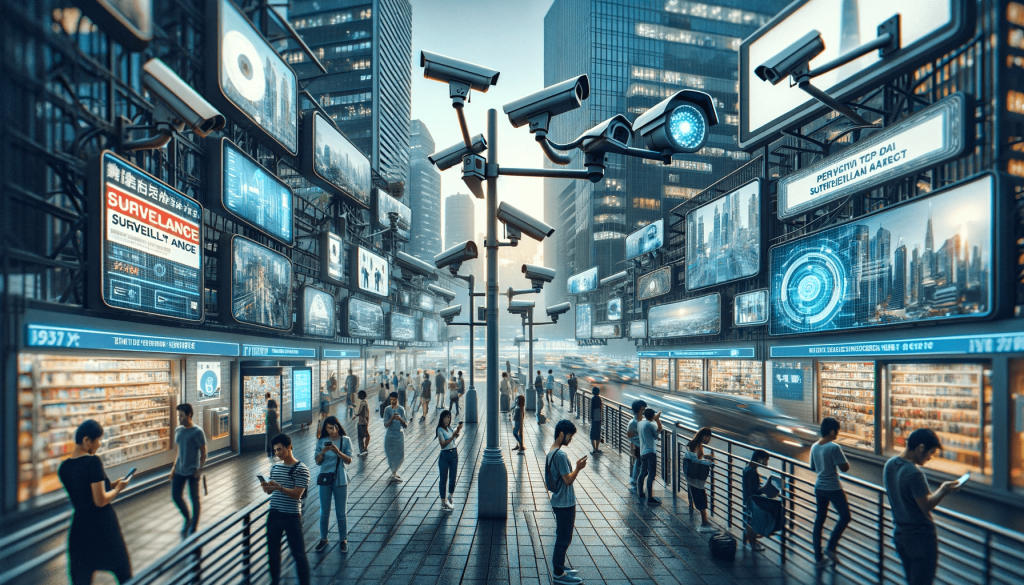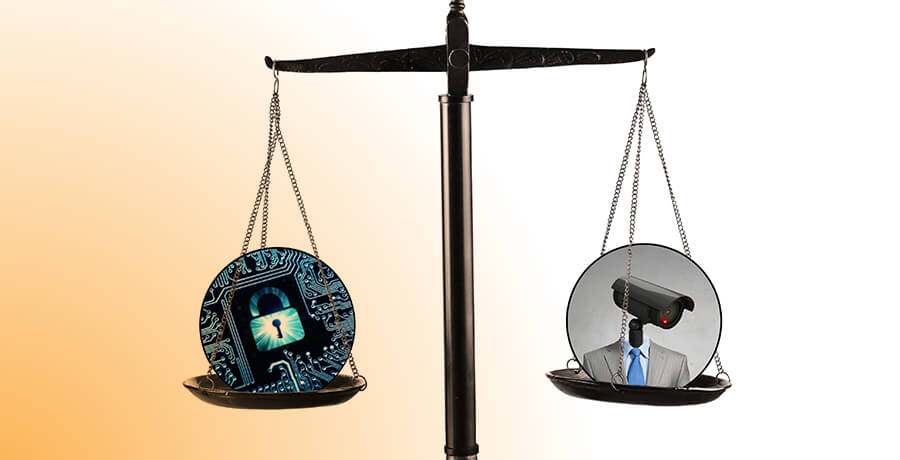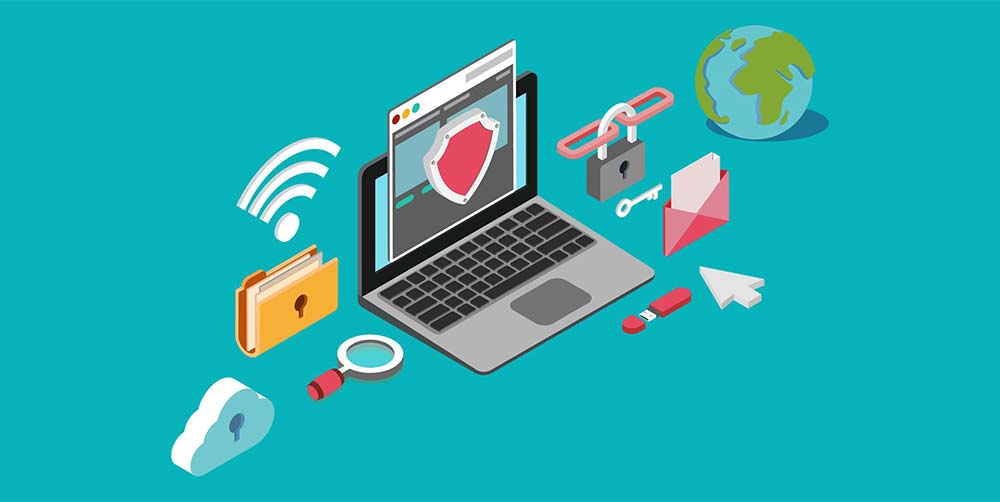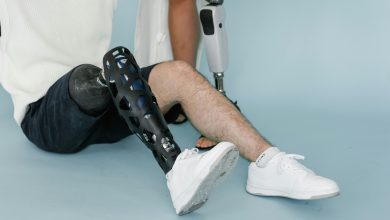SURVEILLANCE TECHNOLOGY: THE THIN LINE BETWEEN SAFETY AND PRIVACY

Surveillance technology has become an integral part of modern society, touching almost every aspect of our lives. From closed-circuit television (CCTV) cameras in public spaces to sophisticated data mining algorithms on social media platforms, the tools for monitoring individuals have grown increasingly advanced. While these technologies promise enhanced security and safety, they also raise significant concerns about privacy and the potential for abuse. This article explores the delicate balance between the benefits of surveillance technology and the risks it poses to individual privacy.
INTRODUCTION
Surveillance technology encompasses a wide range of tools and systems designed to monitor, record, and analyze activities in various settings. These technologies include video surveillance, biometric systems, internet monitoring, and more. The primary purpose of surveillance is to enhance security, prevent crime, and ensure public safety. However, the proliferation of these technologies has sparked a debate about the potential erosion of privacy rights and the impact on civil liberties.
THE EVOLUTION OF SURVEILLANCE TECHNOLOGY
The history of surveillance technology dates back to ancient times when watchtowers and guards were used to monitor activities and ensure security. However, the advent of modern technology has revolutionized surveillance practices.
EARLY DEVELOPMENTS
The first significant leap in surveillance technology came with the invention of photography in the 19th century. This allowed for the documentation of individuals and events, providing a new tool for law enforcement and security agencies. The development of telephone technology in the late 19th and early 20th centuries further expanded the scope of surveillance, enabling authorities to monitor communications.
THE RISE OF CCTV
Closed-circuit television (CCTV) systems, introduced in the mid-20th century, marked a significant milestone in surveillance technology. Initially used for military and industrial purposes, CCTV quickly found applications in public spaces, such as streets, airports, and shopping centers. The ability to record and monitor activities in real-time provided a powerful tool for deterring crime and identifying offenders.
DIGITAL SURVEILLANCE
The digital revolution of the late 20th and early 21st centuries brought about a new era of surveillance. The proliferation of the internet and the development of sophisticated software allowed for the monitoring of online activities. Governments and private companies began to collect vast amounts of data, often without the knowledge or consent of individuals.
The Benefits of Surveillance Technology
Surveillance technology offers numerous benefits, particularly in the realms of security and safety. These benefits include crime prevention, emergency response, and enhanced public safety.
CRIME PREVENTION AND DETERRENCE
One of the most significant advantages of surveillance technology is its ability to prevent and deter crime. Visible CCTV cameras in public spaces can act as a deterrent, reducing the likelihood of criminal activities. Studies have shown that the presence of surveillance cameras can lead to a decrease in crimes such as theft, vandalism, and assault.
EMERGENCY RESPONSE
Surveillance technology plays a crucial role in emergency response situations. For example, CCTV footage can provide valuable information to law enforcement agencies during investigations, helping to identify suspects and piece together events. Additionally, real-time monitoring allows for a rapid response to emergencies, such as natural disasters or terrorist attacks.
ENHANCED PUBLIC SAFETY
Beyond crime prevention, surveillance technology contributes to overall public safety. Traffic cameras, for instance, help manage and monitor traffic flow, reducing the risk of accidents. In public transportation systems, surveillance helps ensure the safety of passengers and staff.
THE PRIVACY CONCERNS
While the benefits of surveillance technology are undeniable, they come at a cost to individual privacy. The widespread use of surveillance tools raises several concerns, including the potential for abuse, the erosion of civil liberties, and the chilling effect on free speech and behavior.
POTENTIAL FOR ABUSE
One of the most significant concerns about surveillance technology is the potential for abuse by authorities. In the wrong hands, surveillance tools can be used to monitor and suppress political dissent, target specific groups, and invade the privacy of individuals without just cause. Historical examples, such as the surveillance practices of authoritarian regimes, highlight the dangers of unchecked surveillance.
EROSION OF CIVIL LIBERTIES
The increasing use of surveillance technology has led to concerns about the erosion of civil liberties. The right to privacy is a fundamental human right, enshrined in various international treaties and national constitutions. However, the widespread collection and analysis of personal data can infringe upon this right, leading to a loss of autonomy and freedom.
CHILLING EFFECT ON FREE SPEECH AND BEHAVIOR
The knowledge that one is being watched can have a chilling effect on free speech and behavior. Individuals may self-censor or alter their actions due to the fear of surveillance. This can stifle creativity, limit political expression, and undermine the democratic process.
BALANCING SAFETY AND PRIVACY
Finding the right balance between safety and privacy is a complex and ongoing challenge. Several approaches can help achieve this balance, including robust legal frameworks, transparent policies, and the use of technology in a way that respects individual rights.
LEGAL AND REGULATORY FRAMEWORKS
One of the most effective ways to balance safety and privacy is through robust legal and regulatory frameworks. These frameworks should clearly define the permissible uses of surveillance technology, establish oversight mechanisms, and provide avenues for redress in cases of abuse.
DATA PROTECTION LAWS
Data protection laws are essential for safeguarding privacy in the age of surveillance. These laws should regulate the collection, storage, and use of personal data, ensuring that individuals have control over their information. The European Union’s General Data Protection Regulation (GDPR) is a notable example of comprehensive data protection legislation.
SURVEILLANCE OVERSIGHT
Effective oversight mechanisms are crucial for preventing the abuse of surveillance technology. Independent oversight bodies should be established to monitor the use of surveillance tools, investigate complaints, and ensure compliance with legal standards.
TRANSPARENCY AND ACCOUNTABILITY
Transparency and accountability are key principles for maintaining public trust in the use of surveillance technology. Authorities should be transparent about the deployment of surveillance tools, providing clear information about their purpose, scope, and limitations. Additionally, accountability mechanisms should be in place to hold those who misuse surveillance technology accountable.
PRIVACY-ENHANCING TECHNOLOGIES
Technological solutions can also play a role in balancing safety and privacy. Privacy-enhancing technologies (PETs) are designed to protect individual privacy while allowing for the benefits of surveillance. These technologies include encryption, anonymization, and differential privacy techniques.
ENCRYPTION
Encryption is a powerful tool for protecting the privacy of communications and data. By encrypting information, it becomes inaccessible to unauthorized parties, ensuring that sensitive data remains confidential.
ANONYMIZATION
Anonymization techniques can be used to remove personally identifiable information from data sets, allowing for the analysis of data without compromising individual privacy. This can be particularly useful in contexts such as healthcare and research.
DIFFERENTIAL PRIVACY
Differential privacy is a mathematical technique that allows for the analysis of data while ensuring that individual privacy is protected. It works by adding noise to the data, making it difficult to identify specific individuals while still allowing for meaningful insights to be drawn.
CASE STUDIES
To better understand the impact of surveillance technology on safety and privacy, it is helpful to examine specific case studies. These examples illustrate the benefits and challenges of surveillance in different contexts.
THE UNITED KINGDOM’S CCTV NETWORK
The United Kingdom is known for its extensive use of CCTV cameras. With millions of cameras in operation, the UK has one of the highest levels of video surveillance in the world. The use of CCTV has been credited with reducing crime rates and aiding in the investigation of criminal activities. However, it has also raised significant privacy concerns, with critics arguing that the pervasive surveillance infringes on individual freedoms.
BENEFITS
The extensive CCTV network in the UK has been instrumental in enhancing public safety. It has helped deter criminal activities, provide evidence for investigations, and improve emergency response times. High-profile cases, such as the identification of the perpetrators of the 2005 London bombings, highlight the value of CCTV footage in solving crimes.
CHALLENGES
Despite its benefits, the UK’s CCTV network has faced criticism for its impact on privacy. The widespread use of cameras has led to concerns about the constant monitoring of individuals and the potential for abuse. Additionally, there are questions about the effectiveness of CCTV in preventing crime, with some studies suggesting that its impact may be limited.
THE UNITED STATES’ SURVEILLANCE PROGRAMS
The United States has implemented various surveillance programs in the name of national security. Following the 9/11 terrorist attacks, the government expanded its surveillance capabilities through programs such as the USA PATRIOT Act and the National Security Agency’s (NSA) data collection initiatives.
BENEFITS
The enhanced surveillance capabilities have been credited with preventing terrorist attacks and ensuring national security. Intelligence gathered through surveillance programs has provided valuable information for thwarting potential threats and identifying terrorist networks.
CHALLENGES
The expansion of surveillance programs in the United States has raised significant privacy concerns. Revelations by whistleblowers, such as Edward Snowden, have highlighted the extent of government surveillance and the potential for abuse. The collection of vast amounts of data, often without the knowledge or consent of individuals, has led to debates about the balance between security and privacy.
CHINA’S SOCIAL CREDIT SYSTEM
China’s social credit system represents one of the most extensive uses of surveillance technology. The system monitors and evaluates the behavior of individuals and organizations, assigning scores based on their actions. These scores can impact various aspects of life, including access to services, travel restrictions, and social standing.
BENEFITS
The social credit system aims to promote good behavior and enhance social order. By incentivizing positive actions and discouraging negative behavior, the system seeks to create a more harmonious society. Additionally, it provides a mechanism for monitoring and addressing issues such as fraud and corruption.
CHALLENGES
The social credit system has faced significant criticism for its impact on privacy and individual freedoms. The extensive monitoring of activities and the use of scores to control behavior raise concerns about the erosion of civil liberties. Critics argue that the system creates a surveillance state, where individuals are constantly monitored and judged based on their actions.
ETHICAL CONSIDERATIONS
The use of surveillance technology raises several ethical considerations. These include questions about consent, the potential for discrimination, and the broader societal impact of pervasive surveillance.
CONSENT AND AUTONOMY
One of the fundamental ethical issues surrounding surveillance technology is the question of consent. In many cases, individuals are unaware that they are being monitored or have not given explicit consent for their data to be collected and analyzed. This lack of consent undermines personal autonomy and the right to control one’s own information. Ethical surveillance practices should involve informed consent, transparency about data collection methods, and clear communication about the purpose and use of the data.
Discrimination and bias
Surveillance technologies, particularly those that rely on algorithms and artificial intelligence, can inadvertently perpetuate discrimination and bias. For example, facial recognition systems have been shown to have higher error rates for people of color, women, and other marginalized groups. This can lead to unequal treatment and reinforce existing social inequalities. Ethical considerations must include ensuring that surveillance technologies are designed and implemented in ways that minimize bias and discrimination, and that there are mechanisms for redress when individuals are unfairly targeted.

SOCIETAL IMPACT
The broader societal impact of surveillance technology is another crucial ethical consideration. The pervasive monitoring of public and private spaces can create a culture of surveillance, where individuals feel constantly watched and judged. This can have a chilling effect on free speech, creativity, and social interactions, ultimately altering the fabric of society. Ethical surveillance practices should balance the need for security with the preservation of a free and open society, where individuals feel safe to express themselves without fear of constant monitoring.
THE ROLE OF TECHNOLOGY COMPANIES
Technology companies play a significant role in the development and deployment of surveillance technologies. As such, they have a responsibility to ensure that their products are used ethically and in ways that respect privacy and civil liberties.
CORPORATE RESPONSIBILITY
Technology companies should adhere to principles of corporate responsibility, ensuring that their products are designed and used in ways that respect human rights. This includes conducting thorough impact assessments, engaging with stakeholders, and implementing safeguards to prevent misuse. Companies should also be transparent about their data collection practices and provide users with clear information about how their data is used and shared.
COLLABORATION WITH REGULATORS
Collaboration between technology companies and regulators is essential for creating a balanced approach to surveillance technology. Companies should work with policymakers to develop regulations that protect privacy while allowing for the legitimate use of surveillance tools. This collaboration can help ensure that regulations keep pace with technological advancements and that there are clear guidelines for the ethical use of surveillance technology.
FUTURE TRENDS IN SURVEILLANCE TECHNOLOGY
As technology continues to evolve, new developments in surveillance technology are likely to emerge. Understanding these trends can help anticipate the challenges and opportunities they present.
ARTIFICIAL INTELLIGENCE AND MACHINE LEARNING
Artificial intelligence (AI) and machine learning are poised to revolutionize surveillance technology. These technologies enable the analysis of vast amounts of data, allowing for more accurate and efficient monitoring. For example, AI-powered surveillance systems can identify suspicious behavior in real-time, improving response times and preventing incidents before they occur. However, the use of AI also raises concerns about bias, accountability, and the potential for abuse.
BIOMETRIC SURVEILLANCE
Biometric surveillance, which involves the use of unique biological traits such as fingerprints, facial features, and DNA, is becoming increasingly common. Biometric systems offer enhanced security by providing a more reliable means of identification. However, the collection and storage of biometric data raise significant privacy concerns, particularly regarding the potential for misuse and data breaches.
INTERNET OF THINGS (IOT)
The Internet of Things (IoT) refers to the network of interconnected devices that collect and share data. IoT technology has numerous applications in surveillance, from smart home security systems to city-wide monitoring networks. While IoT devices can enhance safety and convenience, they also create new vulnerabilities and privacy risks. Ensuring the security of IoT devices and protecting the data they collect is essential for maintaining privacy in an increasingly connected world.
POLICY RECOMMENDATIONS
To navigate the thin line between safety and privacy, policymakers must develop comprehensive strategies that address the challenges posed by surveillance technology. The following policy recommendations can help achieve this balance:
DEVELOP COMPREHENSIVE PRIVACY LAWS
Comprehensive privacy laws are essential for protecting individuals’ rights in the age of surveillance. These laws should regulate the collection, use, and sharing of personal data, ensuring that individuals have control over their information. Privacy laws should also include provisions for transparency, accountability, and redress.
ESTABLISH INDEPENDENT OVERSIGHT BODIES
Independent oversight bodies play a crucial role in ensuring that surveillance practices are conducted ethically and in accordance with the law. These bodies should have the authority to monitor surveillance activities, investigate complaints, and enforce compliance with privacy regulations. Effective oversight can help prevent abuse and build public trust in the use of surveillance technology.
PROMOTE PRIVACY BY DESIGN
Privacy by design is an approach that incorporates privacy considerations into the development of technologies and systems from the outset. By designing surveillance tools with privacy in mind, it is possible to create systems that protect individual rights while still providing security benefits. This approach should be encouraged through industry standards, guidelines, and incentives.
FOSTER PUBLIC AWARENESS AND ENGAGEMENT
Public awareness and engagement are critical for ensuring that surveillance practices align with societal values and expectations. Governments and organizations should engage with the public to educate them about surveillance technologies, their benefits, and their risks. Public consultations and participatory decision-making processes can help ensure that surveillance policies reflect the concerns and priorities of the community.
THE ROLE OF PUBLIC DISCOURSE AND ADVOCACY
Public discourse and advocacy are essential in shaping the future of surveillance technology. Engaging citizens in meaningful discussions about the implications of surveillance helps ensure that diverse perspectives are considered and that policies reflect the values of the broader community.
ENCOURAGING PUBLIC DEBATE
Encouraging public debate about surveillance technology involves creating platforms where individuals can express their views, share experiences, and discuss concerns. Town hall meetings, public forums, and online discussions are valuable tools for fostering dialogue. Media coverage and investigative journalism also play a crucial role in informing the public about surveillance practices and their potential impacts on privacy.
ADVOCACY GROUPS AND CIVIL SOCIETY
Advocacy groups and civil society organizations are vital in representing the interests of individuals and holding authorities accountable. These groups work to raise awareness about privacy issues, advocate for stronger protections, and challenge unlawful surveillance practices. Collaboration between advocacy groups, legal experts, and technologists can lead to more effective strategies for safeguarding privacy.
TECHNOLOGICAL INNOVATIONS AND PRIVACY PROTECTION
Technological innovations can also provide solutions for protecting privacy while benefiting from surveillance capabilities. By leveraging advancements in technology, it is possible to design systems that enhance security without compromising individual rights.
DECENTRALIZED SURVEILLANCE SYSTEMS
Decentralized surveillance systems distribute the control and processing of data across multiple nodes, reducing the risk of abuse and unauthorized access. These systems can enhance security while ensuring that no single entity has complete control over the collected data. Blockchain technology, for example, offers a way to create transparent and secure records of surveillance activities, ensuring accountability and reducing the potential for misuse.
DIFFERENTIAL PRIVACY TECHNIQUES
Differential privacy techniques add statistical noise to data sets, allowing for the analysis of patterns without revealing specific information about individuals. This approach enables organizations to extract valuable insights while preserving the privacy of the data subjects. Differential privacy is particularly useful in areas such as healthcare and social research, where sensitive information must be protected.
PRIVACY-PRESERVING MACHINE LEARNING
Privacy-preserving machine learning techniques, such as federated learning and homomorphic encryption, allow for the development of predictive models without compromising individual privacy. Federated learning involves training machine learning models across decentralized devices while keeping the data localized. Homomorphic encryption enables computations to be performed on encrypted data, ensuring that the underlying information remains secure.
INTERNATIONAL PERSPECTIVES ON SURVEILLANCE AND PRIVACY
The balance between surveillance and privacy varies across different countries and cultures. Understanding international perspectives can provide valuable insights into best practices and challenges in managing surveillance technology.
EUROPEAN UNION: A STRONG FOCUS ON PRIVACY
The European Union (EU) has established itself as a leader in privacy protection with the implementation of the General Data Protection Regulation (GDPR). The GDPR sets stringent standards for data protection, requiring organizations to obtain explicit consent for data collection and to provide individuals with greater control over their information. The EU’s approach emphasizes transparency, accountability, and the protection of fundamental rights, serving as a model for other regions.
UNITED STATES: BALANCING SECURITY AND PRIVACY
In the United States, the balance between surveillance and privacy is shaped by the need to address security threats while respecting constitutional rights. The USA PATRIOT Act and the subsequent reforms, such as the USA FREEDOM Act, reflect the ongoing effort to strike this balance. The U.S. legal framework includes oversight mechanisms and transparency requirements, but the extent of government surveillance remains a contentious issue.
CHINA: SURVEILLANCE AND SOCIAL CONTROL
China’s extensive use of surveillance technology, particularly through its social credit system, highlights a different approach. The Chinese government employs surveillance to promote social order and control, monitoring a wide range of activities and behaviors. This approach raises significant concerns about privacy and individual freedoms, illustrating the potential risks of unchecked surveillance.
THE FUTURE OF SURVEILLANCE TECHNOLOGY
The future of surveillance technology will be shaped by ongoing advancements in technology, evolving legal and regulatory frameworks, and changing societal attitudes. Several emerging trends are likely to influence the trajectory of surveillance practices.
INTEGRATION OF AI AND BIG DATA
The integration of artificial intelligence (AI) and big data analytics will continue to enhance the capabilities of surveillance systems. AI can analyze vast amounts of data in real-time, identifying patterns and anomalies that may indicate security threats. However, the use of AI also raises ethical and privacy concerns, particularly regarding the transparency and fairness of automated decision-making processes.
BIOMETRIC TECHNOLOGIES
Biometric technologies, such as facial recognition, voice recognition, and gait analysis, will become more prevalent in surveillance applications. These technologies offer enhanced accuracy and security but also pose significant privacy risks. Ensuring that biometric data is collected and used responsibly will be a key challenge.
SMART CITIES AND IOT
The development of smart cities, with interconnected devices and sensors, will create new opportunities for surveillance and data collection. Smart city technologies can improve urban planning, traffic management, and public safety. However, the widespread deployment of IoT devices raises concerns about data security and privacy, necessitating robust safeguards and regulations.
RECOMMENDATIONS FOR POLICYMAKERS
To navigate the complexities of surveillance technology and protect privacy rights, policymakers should consider the following recommendations:
IMPLEMENT COMPREHENSIVE PRIVACY LEGISLATION
Comprehensive privacy legislation should be enacted to regulate the collection, use, and sharing of personal data. This legislation should include provisions for informed consent, data minimization, transparency, and accountability. It should also establish clear guidelines for the use of surveillance technology and provide individuals with avenues for redress in cases of abuse.
ESTABLISH INDEPENDENT OVERSIGHT BODIES
Independent oversight bodies should be created to monitor the use of surveillance technology and ensure compliance with privacy regulations. These bodies should have the authority to conduct audits, investigate complaints, and enforce penalties for violations. Effective oversight can help prevent abuse and build public trust in surveillance practices.
Foster Public Engagement and Transparency
Policymakers should engage with the public to raise awareness about surveillance technology and its implications for privacy. Transparent communication about the purpose, scope, and limitations of surveillance activities is essential for maintaining public trust. Public consultations and participatory decision-making processes can ensure that surveillance policies reflect the values and concerns of the community.
ENCOURAGE THE DEVELOPMENT OF PRIVACY-ENHANCING TECHNOLOGIES
Policymakers should promote the development and adoption of privacy-enhancing technologies (PETs) that protect individual rights while enabling the benefits of surveillance. This includes supporting research and innovation in areas such as encryption, anonymization, and differential privacy. Incentives and standards for privacy by design can also encourage the creation of technologies that prioritize privacy protection.
CONCLUSION
Surveillance technology presents both significant opportunities and substantial challenges. While it offers powerful tools for enhancing security and public safety, it also poses risks to privacy and civil liberties. Navigating the thin line between safety and privacy requires a balanced approach that incorporates robust legal frameworks, transparent policies, ethical considerations, and technological innovations.
By fostering collaboration between technology companies, regulators, and the public, it is possible to create a framework that allows for the responsible use of surveillance technology while protecting individual rights. As technology continues to evolve, ongoing vigilance and adaptability will be essential in ensuring that the benefits of surveillance do not come at the expense of fundamental freedoms.
In the end, the goal should be to create a society where individuals feel secure and free, where surveillance is used responsibly and ethically, and where privacy is respected as a cornerstone of human dignity and autonomy. Through thoughtful policy-making, public engagement, and technological innovation, it is possible to achieve this balance and build a future that values both safety and privacy.




